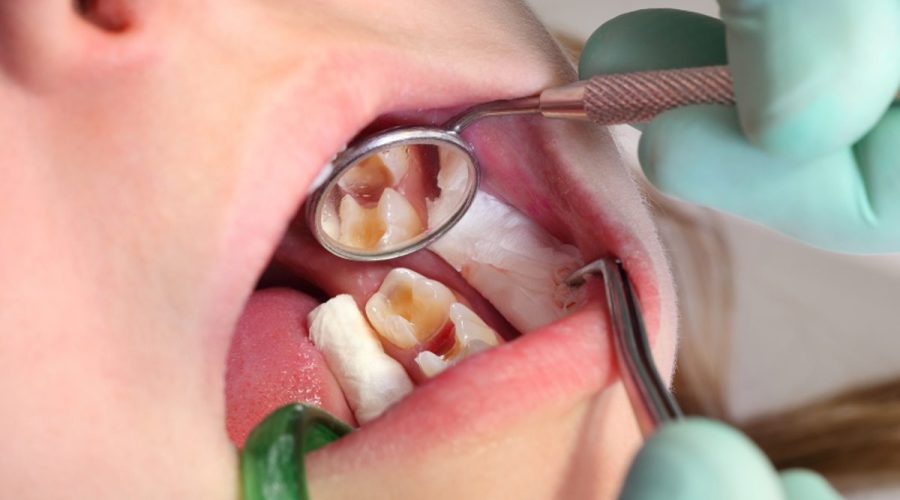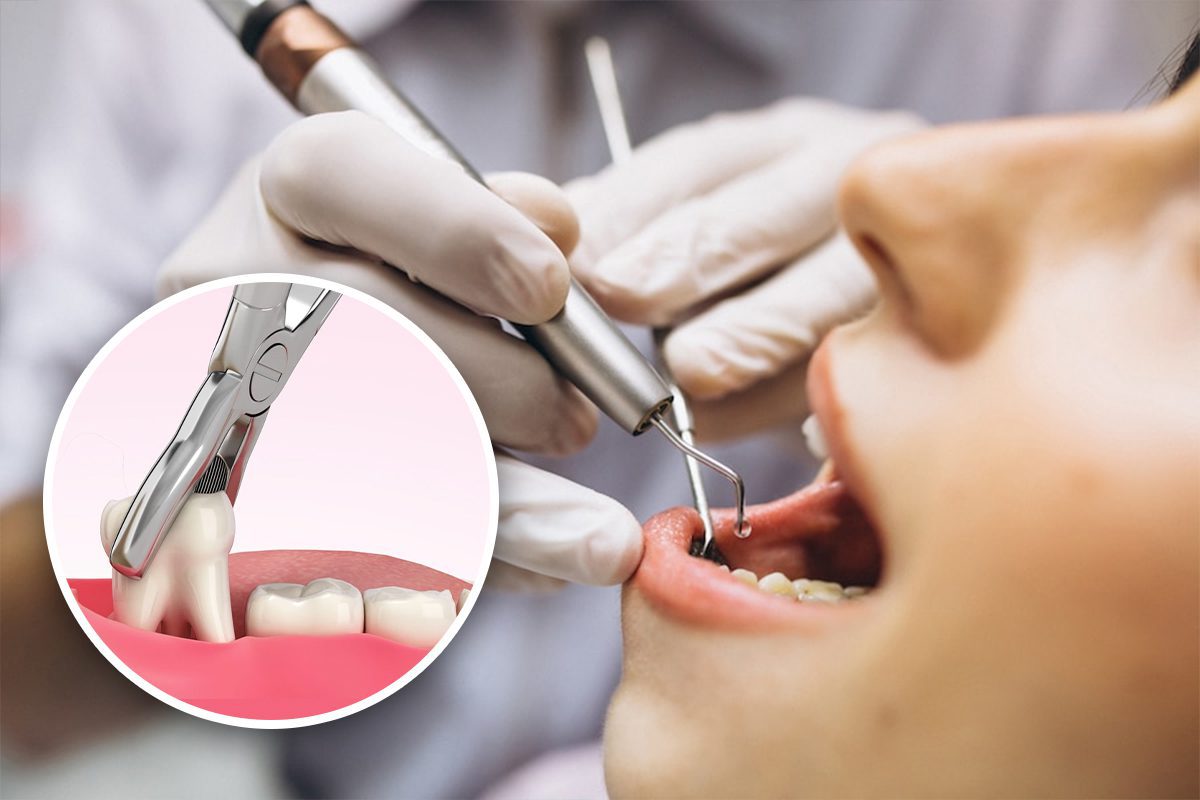What is Tooth Decay?
Tooth decay is a result of improper teeth cleanings and is generally referred to as the destruction of the hard outer layer of teeth, the tooth enamel. It can be a problem for children, adolescents, and adults. A sticky film of bacteria, known as dental plaque, constantly forms on teeth.
Tooth decay is more common in children, but changes with age make tooth decay a problem for adults. The removal of the gums from the teeth combined with a higher incidence of gum disease can negatively affect the roots of the teeth due to the plaque.
The roots of the teeth are covered with cement, a tissue softer than tooth enamel. They are prone to rot and are more sensitive to touch and heat, and cold. Tooth decay is common in people over the age of 50.
In older adults, discoloration around the edges or edges of fillings is also common. Lacking the benefits of fluoride and modern preventive dental care in childhood, many older people often have a variety of dental fillings.
Over the years, these fillings can weaken and tend to break and seep around the edges. Bacteria collect in these tiny cracks, causing acid to build up, leading to rot.
The tooth is made up of the following three layers:
Enamel: Enamel is the outermost hard layer that protects the inner layers of a tooth. Experts call Tooth enamel the hardest structure in the human body and are not known to contain living cells.
Dentin: Dentin, the second layer of a tooth, can be exposed if the enamel is damaged. Cold and hot foods can highly stimulate the nerves of the teeth through small channels in the dentin.
Pulp: The pulp is known as the center of the tooth. This layer contains nerves, blood vessels, and connective tissue.
The damage caused by tooth decay can range from the wear and tear of tooth enamel to painful abscesses in the tooth’s pulp.
What are the possible causes of tooth decay?
Our mouth is full of bacteria, and some of them are helpful, but some can be harmful, which can cause oral problems like tooth decay. The bacteria present in the plaque use the sugars and starches in what you eat and drink to make acids, and the acids begin to eat away at the minerals in tooth enamel.
Plaque can harden into tartar, damaging teeth. Plaque, and tartar can irritate the gums and cause gum disease. Fluoride, along with saliva, helps tooth enamel to repair itself by replacing minerals. Thus, specialists suggest to remove tartar.
Your teeth undergo this natural procedure of mineral loss and recovery throughout the day. But if you fail to take care of your teeth and continue to consume a lot of sugary or starchy foods, your tooth enamel is constantly losing minerals, leading to tooth decay.
Early signs of tooth decay may include the appearance of a white spot from where your teeth have lost minerals. You may be able to end the deterioration at this point. Your tooth enamel can still be repaired only if you take better care of your teeth and limit sugary/starchy foods and drinks.
But as the caries process continues, more minerals are lost. Over time, the enamel weakens and is destroyed, creating a cavity. A cavity is generally referred to as a hole in your tooth, and it is permanent damage that only a professional dentist can repair with a filling.
How can we prevent tooth decay?
Tooth decay is known to occur when foods that contain carbohydrates (sugar and starch) such as bread, cereals, milk, soft drinks, fruits, cakes, or sweets are not wiped off from the teeth. The bacteria that are left in the mouth eat and digest these foods and turn them into acids.
Acid, bacteria, saliva, and food debris combine to form plaque that sticks to teeth. The acids present in the plaque dissolve the enamel surface and cause holes in the teeth, known as cavities.
Following Points prevent tooth decay
- An endodontist advises brushing your teeth a minimum of twice a day with a toothpaste that contains fluoride. It is considered best to brush your teeth after every meal and especially before going to bed.
- Clean the interdental spaces daily with dental floss or interdental cleaners.
- Rinse daily with a fluoride-containing mouthwash. Some douches also contain antiseptic ingredients to remove plaque.
- Eat balanced and nutritious meals and limit your snacking. Avoid carbohydrates like candy, pretzels, and potato chips that can stick to the tooth’s surface. If you are consuming sticky food, brush your teeth soon after.
- Consult with your dentist about using additional fluoride to strengthen your teeth.
- Ask your dentist about dental sealants (a protective coating made of plastic) applied to the chewing surfaces of your molars (molars) to protect them from cavities.
- Drink fluoridated water. At least one liter of fluoridated water a day is needed to protect children from cavities.
- It is advised to visit your dentist for oral examination and cleaning regularly.
Treatment for Tooth Decay
A dentist may recommend treatment for a person with cavities based on their severity. Treatments for tooth decay may include:
Early-stage fluoride treatments
- Dentists recommend fluoride, a mineral that is known to strengthen tooth enamel. A dentist can use fluoride in various ways to stop and even repair the damage caused by tooth decay.
- A dentist applies professional fluoride treatments directly to the teeth.
- These fluoride treatments are generally quick and only last a few minutes. Fluoride comes in various forms – gel, varnish, foam, or solution.
Fillings
- If cavities cause tooth decay, a filling may be a treatment option.
- After drilling the tooth to remove decay, the dentist shapes the cavity to match the filling.
- The dentist then fills the cavity with materials such as dental amalgam or composite.
Crowns
- According to the ADA, larger cavities caused by tooth decay may require a crown instead of a filling.
- To place a crown, the dentist first removes the outside of the tooth and any cavities.
- The dentist begins the process by taking an impression of the original tooth. Meanwhile, the dentist places a temporary crown until the final crown is ready to be placed, usually 1 to 2 weeks later.
Endodontics
- A dentist may perform root canal treatment to avoid extraction if the tooth’s pulp is damaged.
- The dentist begins with numbing the tooth before removing the pulp. They then clean and shape the root canal within the tooth.
- The dentist can also put medicine on the tooth to kill bacteria.
- Next, the dentist fills the root canals with a rubbery substance and places a crown.
Tooth extraction
- A dentist might opt for recommending tooth extraction to a person if tooth decay has caused serious damage.
- The dentist first numbs the damaged tooth. Once the affected tooth is extracted, the dentist recommends a follow-up treatment.
- A person may experience swelling or pain after tooth extraction, which is normal.
Tooth Decay Recovery Process
After an extraction or dental implants, your dentist will send you home to recover. Recovery usually takes a few days. The following steps can help minimize discomfort, reduce the risk of infection, and speed recovery.
- Take pain relievers as directed.
- Bite down on the gauze dressing placed by your dentist firmly but carefully.
- Apply an ice pack to the affected area immediately after the procedure to reduce swelling.
- Eat easily chewable foods such as soup, pudding, yogurt, or applesauce the day after the pump.
- Support your head with a pillow while lying down. Lying down can prolong bleeding.
- Keep brushing and flossing and brushing your tongue, but be sure to avoid the extraction site, which will help prevent infection.




